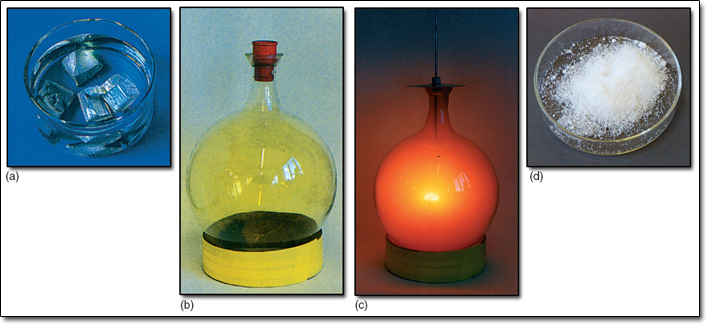Review of Elements and Compounds
Key Questions
-
The physical and chemical properties of a compound differ from its component elements. For example, the element sodium (Na) is a soft, silvery gray active metal that reacts explosively with water to form sodium hydroxide (
#NaOH# ) and hydrogen gas (#H_2# ). The element chlorine, which exits as a diatomic gaseous molecule (#Cl_2# ), has a green color and is toxic. These two elements react to form sodium chloride (#NaCl# ), also called common table salt, which is a white crystalline solid that is not toxic and dissolves in water, but does not react with it.
Figure 23: (a) Sodium metal (immersed in oil to prevent reaction with oxygen and moisture in the air); (b) chlorine gas; (c) the reaction between sodium and chlorine; (d) sodium chloride (common table salt) -
A chemical element is a pure chemical substance consisting of a single type of atom distinguished by its atomic number, which is the number of protons in its atomic nucleus. Elements are divided into metals, metalloids, and non-metals.